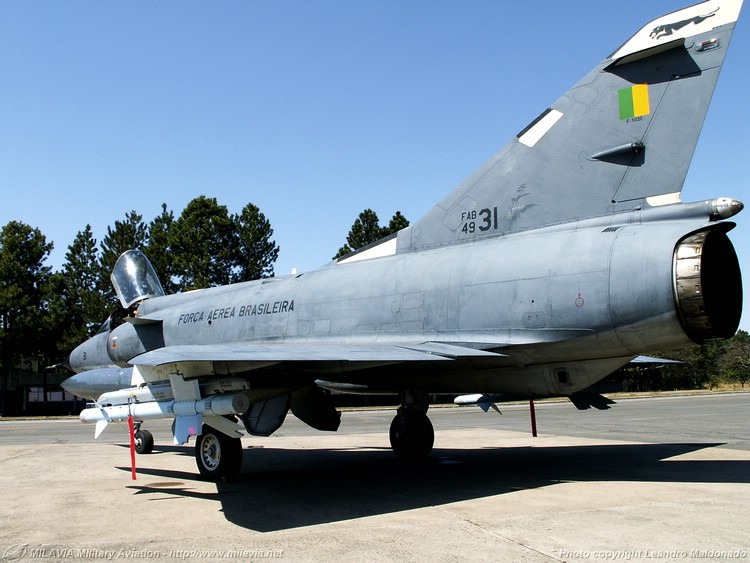- Yes
- No
- Tech Tree
- GE /Premium/ Battlepass
- No
- USA Tech-Tree
- France Tech-Tree
- Latin american Tech-Tree
- Italian Tech-Tree
- i voted no
Dassault F-103E: A brazilian mirage
Introduction:
Spoiler
The story of the F-103E, also known as the Mirage IIIEBR, unfolds in the late 60s and early 70s when the Brazilian Air Force faced the challenge of modernizing its aging fleet of aircraft, including venerable but outdated planes like the Gloster Meteor and F-80. In a quest for new fighter aircraft, Brazil initially aimed to acquire the US-built F-4 Phantom, only to encounter export restrictions that dashed those plans. The Brazilian government then turned its attention to European aircraft manufacturers. Among the contenders were the Saab J35 Draken, the English Electric Lightning, and the Dassault Mirage III. Notably, the Mirage III had recently made its combat debut in Israeli service during the six-day war, where it demonstrated impressive performance. This pivotal moment led Brazil to opt for the purchase of the Dassault Mirage III, marking the beginning of a new era in the Brazilian Air Force.
Development:
Spoiler
In 1970, Brazil signed a contract for 16 aircraft, comprising 12 IIIEs and 4 IIIDs, which would be designated as F-103E and F-103D respectively. The deliveries commenced in October 1972 and concluded in 1973. These aircraft, like their French counterparts, initially featured an unpainted aluminum camouflage scheme. The original F-103E and F-103D closely resembled the Mirage III used by France and were armed with R530, R530E, AIM-9B missiles, as well as a range of dumb bombs, rocket pods, and AS-30 ATGMs. Over time, attrition took its toll on the fleet, prompting Brazil to acquire new airframes to replace those lost. By 1999, 16 new F-103s had been purchased to replace the older ones.
Modification:
Spoiler
By the late 1980s, the Mirage IIIEBRs had started to show signs of obsolescence, and Brazil considered replacing them with either Mirage 2000 or F-16 fighters. However, budget constraints prevented an immediate replacement. Instead, Brazil decided to upgrade the existing F-103 fleet to extend its operational life until new fighters could be procured. Due to budget limitations, only one type of aircraft could be upgraded, and the Mirage IIIEBRs were chosen over the F-5E Tigers, which were considered less obsolete.
The upgrade aimed to replace avionics, add a Heads-Up Display (HUD), enhance the Radar Warning Receiver (RWR), and implement new communication systems. Unfortunately, budget restrictions curtailed the scope of these upgrades. The radar and RWR remained unchanged. However, a new navigation system and communication system were installed, and the aircraft’s structure was refurbished. Canards were added to improve low-speed handling. An in-flight refueling probe, which would have significantly increased the aircraft’s operational range, was considered but ultimately deemed too expensive.
The armament system also received an upgrade to accommodate Israeli Python 3 missiles, and later, compatibility was extended to the MAA-1 Piranha. The F-103 continued to serve for approximately two more decades.
In 2001, recognizing that the airframes were nearing the end of their operational life, Brazil decided to begin the retirement of the F-103. In 2005, all remaining flight-worthy aircraft were deactivated, bringing an end to their illustrious service in the Brazilian Air Force.
General Characteristics:
Spoiler
- Crew: 1
- Wingspan: 8.22 meters
- Length: 15.03 meters
- Height: 4.50 meters
- Empty Weight: 7,050 kilograms
- Take-off Weight (Clean): 9,600 kilograms
- Maximum Take-off Weight: 13,700 kilograms
- Maximum Level Speed at 12,000 meters: Mach 2.2 (2,350 km/h)
- Maximum Level Speed at Sea Level: 750 knots (1,390 km/h)
- Powerplant: 1 × SNECMA Atar 09C afterburning turbojet engine, 4,200 kgf thrust dry, 6,200 kgf with afterburner
- Radar: Cyrano II Bis
- Radar Warning Receiver (RWR): Yes
- CCIP/CCRP: Yes
- Flares/Chaff: Yes
Armament:
- Dumb Bombs:
- SAMP 250 kg bombs
- SAMP 400 kg bombs
- Mk82 500 lb bombs
- Mk83 1000 lb bombs
- Rockets:
- Matra JL-100R SNEB rocket pod
- Anti-Tank Guided Missiles (ATGMs):
- AS-30
- Air-to-Air Missiles:
-
R530
-
R530E
-
AIM-9B

-
Python 3
-
MAA-1 Piranha
-
Images:
Source:









